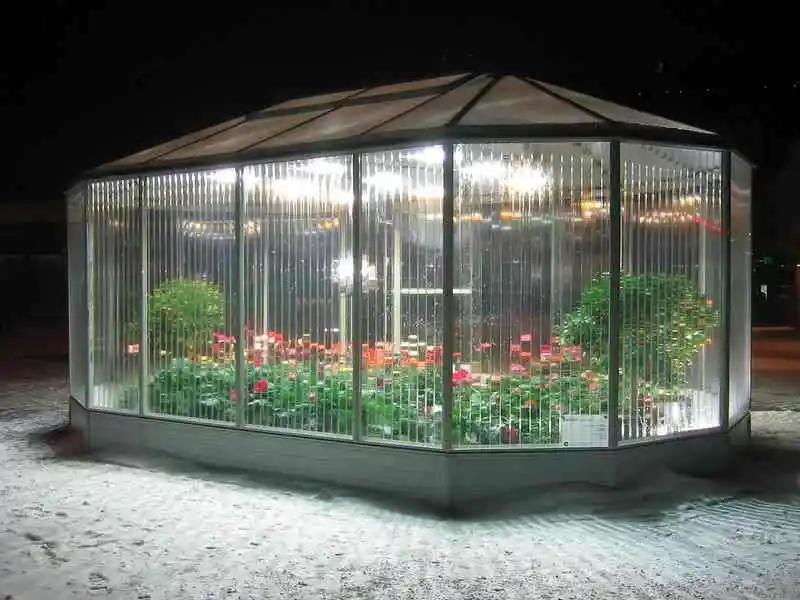
Whether you are an end user or a middleman in the polycarbonate domain, the challenge of selecting the appropriate polycarbonate sheet thickness can be a complex task, leaving many unsure where to start. Polycarbonate plastic is a robust material known for its dependability and flexibility, widely applied across commercial, industrial, and everyday uses. However, the subtleties of thickness play a crucial role in performance, a nuance often overlooked. If you are eager to learn more to make informed decisions, we are here to help.
In this blog post, we will discuss all the intricacies and other details to help you confidently determine the optimal polycarbonate sheet thickness for your specific requirements.
Understanding the thickness of polycarbonate sheet
That said, it’s helpful for property owners, contractors, and real estate agents to understand why polycarbonate sheets come in different sizes. Due to its elastic properties, polycarbonate sheets can last for decades, mainly if the structure is built to last. In addition to durability, the ease of use and thickness efficiency of polycarbonate sheets are often based on certain aspects, such as:
- Translucent, opaque, or overall ability to pass light.
- Insulation and heat retention
- Ultraviolet (UV) and light diffusion protection
- Panel volume
- Conductivity
Given the special needs of polycarbonate roofs, different sheet thicknesses can ultimately affect these concerns. Imagine if the greenhouse needed a polycarbonate roof instead of needing to cover the trellis with a walkway. It affects how you interact with both structures. Although greenhouses may require thick sheets and additional panels, trusses work beautifully with thin polycarbonate roofs.
Knowing the proper thickness of polycarbonate sheets helps home and apartment owners, contractors, and real estate agents use good judgment when repairing or renovating a home’s roof, walls, or panels. On the plus side, polycarbonate roofs are suitable for most applications.
A complete size guide for polycarbonate sheets
Understanding the implications of each thickness is key to optimizing performance while avoiding unnecessary costs.
4mm
Ideal for projects like greenhouse glazing and occasional point-of-sale boards. This thickness ensures flexibility and is a cost-effective choice for specific applications.
6mm
Versatile and commonly used for greenhouse glazing and point-of-sale boards. Strikes a balance between flexibility and durability.
10mm
A practical and cost-effective solution, perfect for smaller carports and canopies with limited spans. Balances functionality and budget considerations.
16mm
Offers a larger span than the 10mm sheets, making it suitable for carports and canopies. Occasionally used in smaller conservatories for unheated areas.
25mm
Ensures a high-quality finish, making it popular for commercial projects and upscale domestic structures. Ideal for projects like conservatories, canopies, orangeries, and atriums.
35mm
Crafted explicitly for conservatory roofs, offering versatility with color options, including a heat guard. Creates a comfortable year-round space, addressing temperature concerns associated with traditional conservatories.
What is the importance of thickness of polycarbonate?
Polycarbonate thickness is important in determining the material’s strength and insulation properties. Thick polycarbonate panels increase structural integrity and make it less susceptible to damage from hail, heavy snow, and high winds. Additionally, thicker panels offer better insulation and help maintain a stable temperature.
While thin polycarbonate panels are lighter and show more flexibility, making their installation simple and easy, they may not provide the same level of durability and insulation as thicker panels. Finding a balance between resistance and isolation and ease of installation is important, allowing you to choose the optimal thickness.
Choosing the Right Thickness of Polycarbonate Sheet for Roofing
So now you have an idea that these sheets come in different thicknesses and are wondering which option is best for you to opt for your roofing needs. This is where we always recommend expert help and consultation so they can guide you as per your weather conditions and other environmental factors. Also, you will find many types of polycarbonate sheets used for other applications, such as soundproofing walls, room partitions, and wall backdrops. Depending on your needs, polycarbonate roofing can also be customized according to your specific specifications.
On a general note, polycarbonate roofs come in different thicknesses, so it’s good to know that a safe base thickness is between 4 mm and 8 mm, depending on the extreme weather conditions in your area. It can also affect the efficiency of polycarbonate sheets. For example, installing thicker panels in a small space may allow less light, but it also strengthens the walls and roof. One thing to also consider is that unless specified otherwise, polycarbonate sheets used for roofing applications are “multilayer.” These multilayer polycarbonate sheets thicken the body and allow the chamber to trap more heat, resulting in better insulation. Solid polycarbonate sheets are also available in various colors, including clear panels for skylights.
How Can I find a Polycarbonate Sheets supplier?
As a leading wholesale supplier of polycarbonate sheets, we offer an extensive range of options in various thicknesses, colors, widths, and lengths, ensuring a tailored fit for your bulk needs. Our dedicated team is ready to assist you, providing expert guidance and personalized service. Navigate through wholesale choices effortlessly and consider our installation service for added convenience.
FAQs
Is it hard to install Thicker Polycarbonate sheets?
Well, the thickness of polycarbonate plays a role in the installation process. Thicker sheets are generally larger and more challenging to handle during installation. However, the impact of this difference is often less pronounced than one might assume. Thicker polycarbonate sheets typically feature a multiwall construction, visible in the cross-section as multiple ‘chambers’ between the flat faces. This unique design, reminiscent of a sandwich, incorporates additional chambers, contributing to greater thickness. Surprisingly, the increased thickness doesn’t necessarily translate to added weight, as the numerous chambers make the sheet hollower and, consequently, lighter. While you may require longer and more specialized fixings, readily available from the same brand as your sheets, the installation process for thicker sheets is generally manageable and shouldn’t pose a significant challenge.
Which size is good to go for the greenhouse?
Whether you are looking for replacement greenhouse sheeting or building a new structure, 4mm polycarbonate offers a great solution. Also the perfect solution for cloches and cold frames. 4mm polycarbonate sheets have high impact resistance and excellent cost performance; they are lightweight and safe to handle as compared to glass.
Is 4mm polycarbonate strong enough?
4mm polycarbonate has exceptional strength, being ten times stronger than glass. Even in the event of a breakage, it demonstrates a key advantage – it does not shatter, enhancing safety in various applications.
Can polycarbonate crack during cutting?
Polycarbonate’s heat-resistant properties make it amenable to cutting with standard power tools, eliminating the need for cooling under standard machining conditions. The inherent durability of polycarbonate further safeguards against splintering or cracking during the cutting process, ensuring a smooth and reliable fabrication experience.
